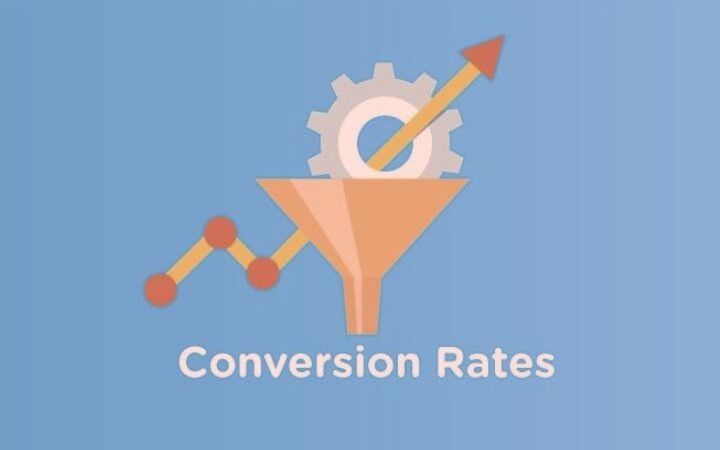Want To Know About Initial Public Offering(IPO) And About The Public Companies

Every investor who buys individual stocks, funds, or ETFs directly ultimately buys stock companies and hopes for a return from them. While there is a lot of talk about the mechanisms and laws of the financial markets, Initial Public Offering, it is rarely asked how public companies themselves think, act and act.
Ultimately, what counts is whether a strategy and an investment work. But why are companies listed at all? Why are they giving out money? What conflicts of interest are there? Where does the return come from?
Private Equity: Corporates vs. Public Companies
Strictly speaking, a newly founded company is “private equity .”These companies are not easy to buy—the gas station around the corner, the medium-sized craft business, or the supermarket chain Lidl.
These are private companies.
We mainly look at listed companies. Their shares are traded as shares on the stock exchange. Anyone can buy these shares; the claims are valued at any time by the share price.
These are public companies.
So what are the differences between private and public companies?
- Anyone can buy shares in public companies and private companies only in exceptional cases
- Public companies are constantly evaluated. Private companies are not
- Public companies can issue shares to raise capital, but it is much more difficult for private companies
- Public companies have to disclose significantly more business figures
Now suppose that a private company goes public. How does this happen, and what are the specific considerations that the company should make?
Initial Public Offering (IPO): Why do companies go public?
There are good reasons to keep a company private and seek a public listing. It mainly depends on the owners and the company’s goals.
Benefits of going public
- Continuous evaluation by the share price enables the determination of the enterprise value
- Easier to raise capital by issuing new shares through a capital increase
- Positive signal for partners and customers, as the stock exchange listing creates trust
- Acquisitions of other companies can be paid for with their shares
- New capital flows into the company through an initial public offering(IPO)
- The previous owners (often founders) can sell their shares and thus put their theoretical wealth into practice
Disadvantages of going public
- Continual valuation by the stock price can induce a rush into the company that there would not be with a private listing
- Going public involves costs and time
- Higher disclosure requirements for business figures and targets
- Hostile takeovers become possible when (almost) all outstanding shares are bought
- Previous owners give up shares and thus voting rights
Now our company has concluded that the initial public offering(IPO) should take place. How does this work now?
How does the IPO work? IPO explained
Even before it goes public, a company belongs to someone: the founders, employees, or existing investors, for example.
When going public, there is one big goal: to raise capital. In other words, money that flows into the company can be used to expand and further develop the company.
How does a company go public?
In an initial public offering (IPO), existing shareholders sell their shares (in whole or part). New investors buy these new shares after the latest issue, and money flows into the company.
When subscribing to the new shares, large banks and institutional investors, in particular, will be brought on board to buy the shares directly. After the initial public offering(IPO), any investor can purchase the shares.
IPO vs. SPAC: What are the differences?
Another way companies go public has become popular in recent years: Special Purpose Acquisition Companies (SPACs).
They’re shell companies that are ultimately just a pile of money raised by an investor. They then look for a private company that wants the money to buy it out and get it public quickly, at less cost, and with fewer disclosure requirements.
There is always criticism here: false incentives for the initial organizer of the SPAC, fewer disclosure requirements, and a flood of initial public offering(IPOs).
Obligations and opportunities of joint stock companies
The company is now listed on the stock exchange. What does it mean now for the day-to-day business of the company? What exactly is changing?
- Management Incentives: Managers often have incentives linked to stock market prices. Short-term incentives can lead to short-term decisions, which is worse for long-term investors.
- Employee shares can also be given to other employees, who get more motivation as a result or who only receive higher salaries if the company develops well overall.
- Better opportunities for raising capital and acquisitions: The company can now raise new money by issuing new shares (more on that in a moment) or buying another, smaller company by paying for its shares.
- Regularly publishing quarterly and annual results that give investors an overview of the company’s situation. Depending on the region, there are still different standards and obligations.
- Holding a general meeting to present business results once a year and invite shareholders to ask questions.
- Ad hoc announcements must be published as soon as there is news in the company that makes a significant difference. These include acquisitions, profit warnings, target increases, or, for example, legal problems.
Caution: Conflicts of interest at companies
We now know why companies go public, the advantages and disadvantages, and the obligations and opportunities. But are there any conflicts of interest?
Does the company get money when buying shares?
With a new issue, new money flows into the company, which comes from the share buyers.
Once a company is public, a share only changes from ex-shareholder to new shareholder. The company has nothing to do with it. One investor sells the stock to another and gets their money in return.
But does the stock price impact that can result from high demand for the stock?
Does a company benefit from its share price?
A rising share price means an increasing market value. That sounds great for the company, but it makes the shareholders happy. Just because the price is rising, the company no longer has money available, and the stock market value has no direct impact on the business.
However, an increased share price can have indirect effects: the more valuable the company’s shares, the
- A company has to issue fewer shares when raising capital to collect new money
- A company has to pay fewer shares if it wants to buy another company
- Better is the company’s external image towards customers, suppliers, and banks
Is management acting too quickly?
The management of a public company is often interested in increasing the share price and market value through financial incentives. These financial incentives are not clear.
A CEO who only sees himself at the company for two years will be reluctant to initiate expensive and unpopular projects that only pay off in the long term. Investments could be deferred and short-term profitability optimized.
What do companies do with the profit?
Our company has mastered the IPO, published the first reports, and considered how to minimize conflicts of interest. Now the first profit of the year is due. What should happen with it?
When deciding on the appropriation of profits, the most critical question is the capital requirement: does the company need money to grow? So can it profitably invest the profit in its own company? Or is the money superfluous?
If the company needs the money and can use it profitably, e.g., for international expansion, developing of new products, or buying other companies, the profit should stay in the company.
If that’s not the case, meaning there are no profitable opportunities within the company, the money should be returned to shareholders to decide for themselves what to do with it.
There are different ways to do this, which are more or less suitable depending on the situation.
Dividend vs. share buybacks vs. paying off debt
The best known is the distribution of profits by dividend. Alternatives are buying back your shares or paying off debt. When is which variant recommended?
- Dividend Distribution: The most direct and common way to return money is to distribute profits pro rata to shareholders. Companies that do this often have a dividend yield of 1 – 4%, i.e., a dividend about the share price. Learn more about dividend strategies and what they deliver here.
- Stock Buybacks: When the company buys back its stock, it allocates fewer shares. The share price rises without investors having to pay the tax directly on this profit, as with dividend payments. According to your assessment, a share buyback makes sense if the share is valued (too) cheaply.
- Debt Repayment: Repaying debt is also an indirect way of paying back principal. A company is more valuable when it has less obligation. This makes sense, especially when the debt burden is too high or the loans are still too expensive.
Financing: How does a company raise money?
The opposite may also occur: no profit is to be distributed, or there is none. At the same time, new capital is to be raised to grow further and more strongly or to be able to repay debts.
How is the company financed now?
There are two options for financing: taking out loans or issuing shares. Let’s take a quick look at both options.
Variant 1: Take out a loan or issue bonds
A company can take out a loan from the bank and pay interest on it, just like private individuals do. An alternative is to issue a bond.
It is determined which volume should be collected, how high the interest should be for the bond buyers, and when the bond should be repaid in full. Such a bond is then issued and usually traded on the stock exchange like a share.
Variant 2: capital increase
A capital increase describes how a public company increases the number of shares issued to raise new money.
There are different ways of increasing capital (e.g., ordinary, conditional, or authorized capital increase), the details of which I will omit here for reasons of space.
How does a capital increase work?
This will be decided at the general meeting. New shares, i.e., additional shares, are issued. Subscription rights can also be given.
These can sell existing shareholders or exchange them for new shares to keep their previous stake in the company constant.
Take out a loan or issue shares: which is more worthwhile?
A loan is more expensive in the first step because interest costs are incurred. But investors also expect returns. Typically, when investors expect a return of 8% per year, they’d rather see the company borrow at 2% per year than dilute their stake.
Depending on the situation, a different financing structure is available. In practice, most companies use both. Especially with historically low-interest rates, there are hardly any companies that do without cheap loans.
The cheaper the stock is valued, and the cheaper the credit, the more likely a company will borrow or issue bonds. The higher the stock is valued and the more expensive a loan would be, the more likely a company will choose a capital increase.
Where do stock company returns come from?
Now we have learned a lot about how a company itself thinks and acts. But how does all this result in return for the shareholder?
Ultimately, three main factors also ensure that stock markets will rise 99.9% in the long term :
- Inflation: Inflation reflects the average rate of annual price increases. This is 2% in a long time. So prices, wages, and sales are rising.
- Capital Repatriation: You learned about the three ways companies can repatriate cash (dividends, share buybacks, and debt settlement). This creates a return even if the share price only moves sideways.
- Growth: Every day, people go to work in a company that wants to set goals and get ahead. They eliminate things that don’t work, improve existing products and develop new ones. Not everyone will succeed. On average, however, companies and their products are getting better. Taken together, we experience economic growth, innovation, and productivity growth. As a result, stock corporations become more valuable overall in the long term.
This is how you achieve returns as a shareholder.
So there are different reasons why we expect positive returns from stock companies. The long-term average is 7 – 10% per year.
Of course, not every public company will achieve this: some will greatly overperform, and others will fail. On average, however, investing in stocks works and makes them the strongest of all asset classes.






